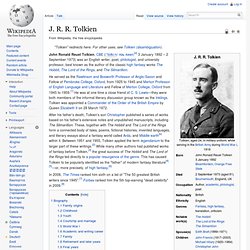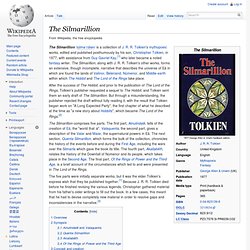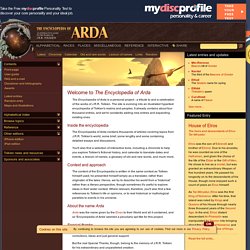

Wiki. John Ronald Reuel Tolkien, CBE (/ˈtɒlkiːn/ TOL-keen;[a] 3 January 1892 – 2 September 1973) was an English writer, poet, philologist, and university professor, best known as the author of the classic high fantasy works The Hobbit, The Lord of the Rings, and The Silmarillion.

He served as the Rawlinson and Bosworth Professor of Anglo-Saxon and Fellow of Pembroke College, Oxford, from 1925 to 1945 and Merton Professor of English Language and Literature and Fellow of Merton College, Oxford from 1945 to 1959.[1] He was at one time a close friend of C. S. Lewis—they were both members of the informal literary discussion group known as the Inklings.
Tolkien was appointed a Commander of the Order of the British Empire by Queen Elizabeth II on 28 March 1972. In 2008, The Times ranked him sixth on a list of "The 50 greatest British writers since 1945".[7] Forbes ranked him the 5th top-earning "dead celebrity" in 2009.[8] Biography Family origins Most of Tolkien's paternal ancestors were craftsmen. The Silmarillion. The Silmarillion /sɪlməˈrɪlɨən/ is a collection of J.

R. R. Tolkien's mythopoeic works, edited and published posthumously by his son, Christopher Tolkien, in 1977, with assistance from Guy Gavriel Kay,[1] who later became a noted fantasy writer. The Silmarillion, along with J. R. After the success of The Hobbit, and prior to the publication of The Lord of the Rings, Tolkien's publisher requested a sequel to The Hobbit, and Tolkien sent them an early draft of The Silmarillion. The five parts were initially separate works, but it was the elder Tolkien's express wish that they be published together.[1] Because J. Overview[edit] The Silmarillion, like Tolkien's other Middle-earth writings, was meant to have taken place at some time in Earth's past.[4] In keeping with this idea, The Silmarillion is meant to have been translated from Bilbo's three-volume Translations from the Elvish, which he wrote while at Rivendell.[5] Among the notable chapters in the book are: Synopsis[edit] Akallabêth[edit]
The Encyclopedia of Arda. The Encyclopedia of Arda is a personal project - a tribute to and a celebration of the works of J.R.R.

Tolkien. The site is evolving into an illustrated hypertext encyclopedia of Tolkien's realms and peoples. It already contains about four thousand entries, and we're constantly adding new entries and expanding existing ones. Inside the encyclopedia The Encyclopedia of Arda contains thousands of articles covering topics from J.R.R. You'll also find a selection of interactive tools, including a chronicle to help you explore Tolkien's fictional history, and calendar to translate dates and events, a lexicon of names, a glossary of old and rare words, and much more.
Context and approach The content of the Encyclopedia is written in the same context as Tolkien himself used; he presented himself simply as a translator, rather than originator of the tales. About the name Arda Special thanks. J. R. R. Tolkien. The Hobbit. Category:Middle-earth books. The scope of this category is books or writings by J.

R. R. Tolkien about his Middle-earth legendarium. Books about the author and his works are in Category:Tolkien studies. Books or tales named in the books, and which are said to form the source material for Tolkien's work, are in Category:Middle-earth objects or in another suitable category. Subcategories This category has the following 6 subcategories, out of 6 total. Pages in category "Middle-earth books" The following 17 pages are in this category, out of 17 total.